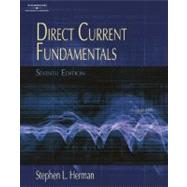
Note: Supplemental materials are not guaranteed with Rental or Used book purchases.
Purchase Benefits
What is included with this book?
| PREFACE | xiii | ||
| CHAPTER 1 An Introduction to Electricity and Electronics | 1 | (11) | |
|
|||
|
|||
|
|||
|
|||
|
|||
|
|||
| CHAPTER 2 Electricity Production and Use | 12 | (9) | |
|
|||
|
|||
|
|||
|
|||
|
|||
|
|||
|
|||
|
|||
| CHAPTER 3 Electrostatics | 21 | (14) | |
|
|||
|
|||
|
|||
|
|||
|
|||
|
|||
|
|||
|
|||
| CHAPTER 4 Basic Circuit Concepts | 35 | (14) | |
|
|||
|
|||
|
|||
|
|||
|
|||
|
|||
|
|||
|
|||
|
|||
|
|||
|
|||
|
|||
| CHAPTER 5 Scientific Notation and Metric Prefixes | 49 | (14) | |
|
|||
|
|||
|
|||
|
|||
|
|||
|
|||
|
|||
| CHAPTER 6 Electrical Quantity Measurement | 63 | (17) | |
|
|||
|
|||
|
|||
|
|||
| CHAPTER 7 Resistance | 80 | (27) | |
|
|||
|
|||
|
|||
|
|||
|
|||
|
|||
|
|||
|
|||
|
|||
|
|||
|
|||
|
|||
|
|||
| CHAPTER 8 Ohm's Law | 107 | (5) | |
|
|||
|
|||
| CHAPTER 9 Electrical Power and Energy | 112 | (18) | |
|
|||
|
|||
|
|||
|
|||
|
|||
|
|||
| CHAPTER 10 Series Circuits | 130 | (28) | |
|
|||
|
|||
|
|||
|
|||
|
|||
|
|||
|
|||
|
|||
|
|||
|
|||
|
|||
|
|||
| CHAPTER 11 Parallel Circuits | 158 | (21) | |
|
|||
|
|||
|
|||
|
|||
|
|||
|
|||
|
|||
|
|||
|
|||
|
|||
|
|||
| CHAPTER 12 Series-Parallel Circuits and Loaded Voltage Dividers | 179 | (23) | |
|
|||
|
|||
|
|||
|
|||
| CHAPTER 13 Conduction in Liquids and Gases | 202 | (16) | |
|
|||
|
|||
|
|||
|
|||
|
|||
|
|||
|
|||
| CHAPTER 14 Batteries | 218 | (26) | |
|
|||
|
|||
|
|||
|
|||
|
|||
|
|||
|
|||
| CHAPTER 15 Magnetism and Electromagnetism | 244 | (22) | |
|
|||
|
|||
|
|||
|
|||
|
|||
|
|||
|
|||
|
|||
|
|||
|
|||
| CHAPTER 16 Applications of Electromagnetism | 266 | (12) | |
|
|||
|
|||
|
|||
|
|||
|
|||
|
|||
| CHAPTER 17 Electrical Measuring Instruments (Another Application of Electromagnetism) | 278 | (27) | |
|
|||
|
|||
|
|||
|
|||
|
|||
|
|||
|
|||
|
|||
|
|||
|
|||
| CHAPTER 18 Electromagnetic Induction | 305 | (13) | |
|
|||
|
|||
|
|||
|
|||
|
|||
| CHAPTER 19 DC Generators | 318 | (36) | |
|
|||
|
|||
|
|||
|
|||
|
|||
|
|||
|
|||
|
|||
|
|||
|
|||
|
|||
| CHAPTER 20 Mechanical Motion from Electrical Energy | 354 | (14) | |
|
|||
|
|||
|
|||
|
|||
|
|||
| CHAPTER 21 DC Motors | 368 | (32) | |
|
|||
|
|||
|
|||
|
|||
|
|||
|
|||
|
|||
|
|||
|
|||
|
|||
|
|||
| CHAPTER 22 Starters and Speed Controllers | 400 | (35) | |
|
|||
|
|||
|
|||
|
|||
|
|||
|
|||
|
|||
|
|||
|
|||
|
|||
|
|||
| CHAPTER 23 Solid-State Control of DC Motors | 435 | (9) | |
|
|||
|
|||
|
|||
|
|||
| CHAPTER 24 Solving DC Networks | 444 | (23) | |
|
|||
|
|||
|
|||
|
|||
| APPENDIX | 467 | (20) | |
| GLOSSARY | 487 | (8) | |
| SELECTED ANSWERS TO ODD-NUMBERED PROBLEMS | 495 | (8) | |
| INDEX | 503 |
The New copy of this book will include any supplemental materials advertised. Please check the title of the book to determine if it should include any access cards, study guides, lab manuals, CDs, etc.
The Used, Rental and eBook copies of this book are not guaranteed to include any supplemental materials. Typically, only the book itself is included. This is true even if the title states it includes any access cards, study guides, lab manuals, CDs, etc.